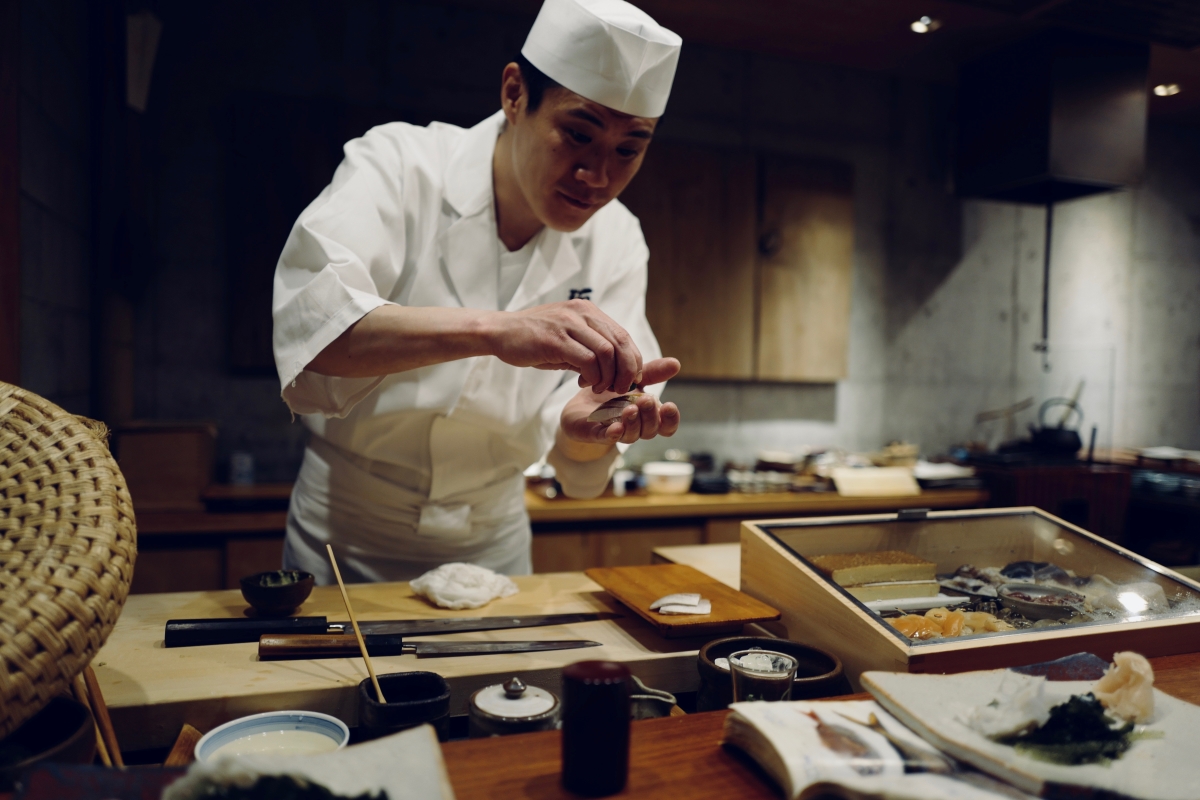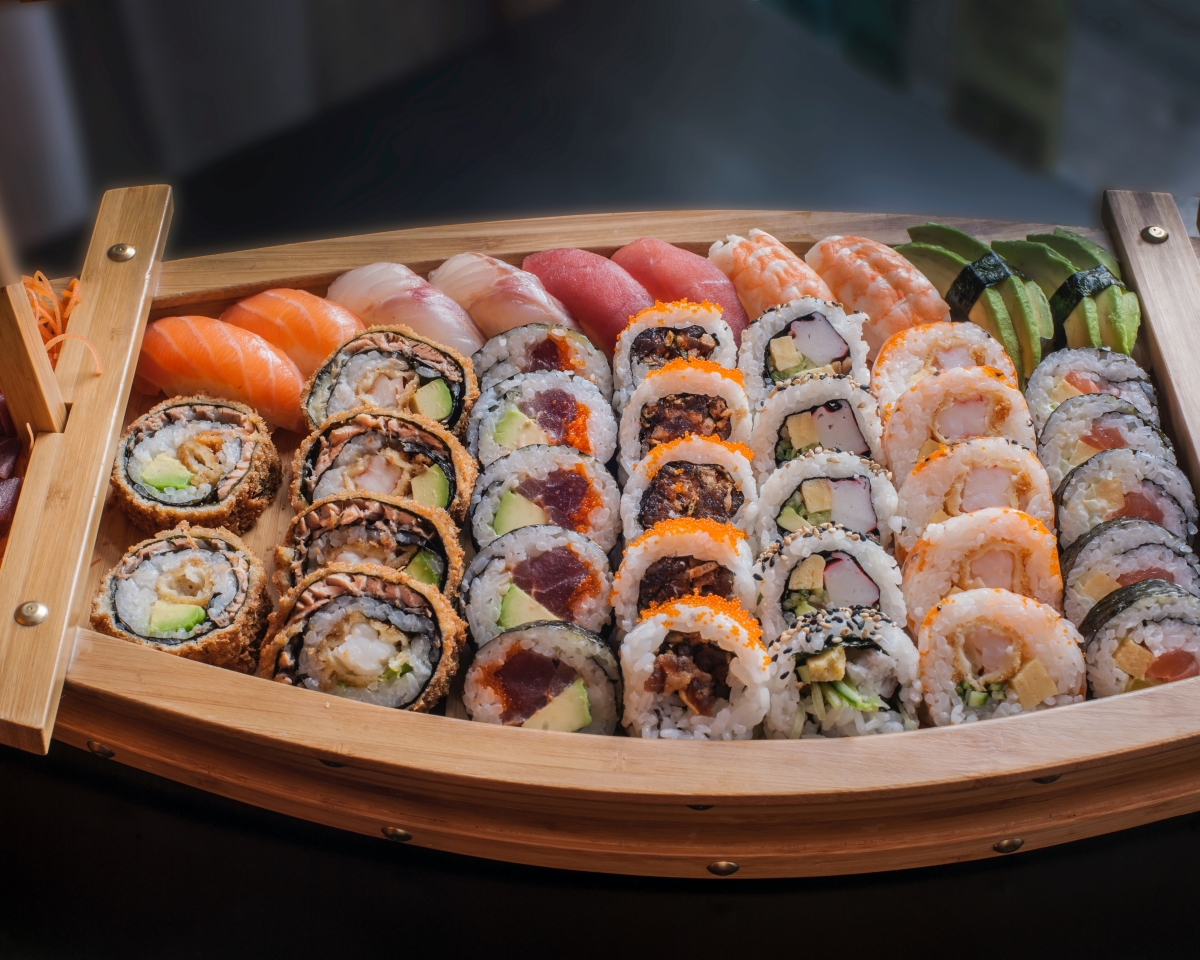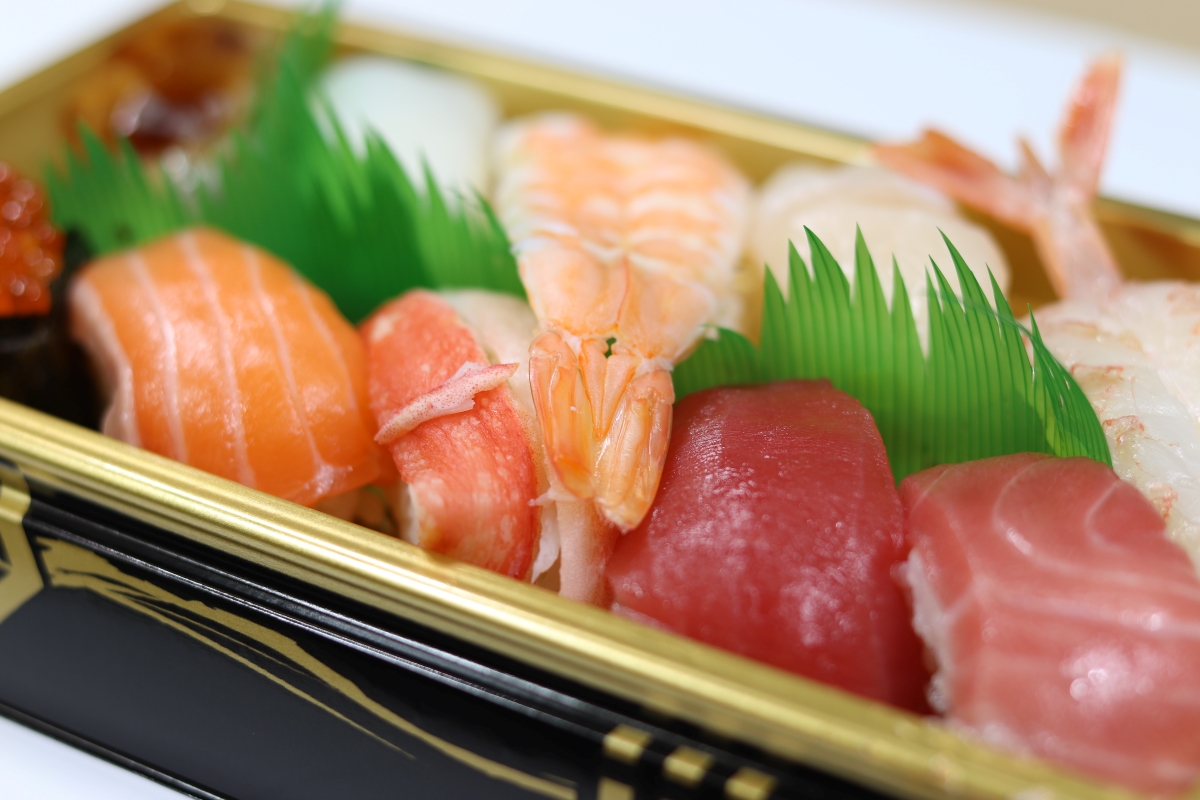Sushi is a popular Japanese dish that has spread over the world. This savory dish is made with vinegared rice and is frequently served with a variety of seafood, veggies, and fruits. The rice is perfectly cooked before being seasoned with a particular blend of vinegar, sugar, and salt. The sticky texture of the rice serves as the ideal foundation for the other components, which are masterfully rolled or shaped into bite-sized pieces. Sushi is frequently accompanied by soy sauce, wasabi, and pickled ginger, which give additional levels of taste and spice. Sushi has earned its place as a culinary classic due to its wonderful taste and complex preparation.

Photo by Jakub Dziubak on Unsplash
The Evolution of Sushi: From Southeast Asia to Japan
Sushi’s origins can be traced back to the 2nd century AD, when it was invented in Southeast Asia as a method of preserving fish. The salting of the fish was followed by wrapping it in fermented rice. This kept the fish and rendered it safe to consume for extended periods of time. The meal evolved over time, and different sorts of ingredients were added to the recipe. Sushi arrived in Japan in the eighth century, when it was polished and developed into the dish we know today. Around this time, vinegar was used to replace the fermentation process, which made the rice sticky and helped to preserve the fish. Also, raw fish was used instead of cooked fish, giving sushi its unique flavor.

Photo by Thomas Marban on Unsplash
The Evolution and Global Popularity of Sushi: From Edo Era to Present Day
Sushi has evolved over time, with different regions of Japan generating their own distinct variants of the meal. Sushi chefs, for example, began to focus on the presentation of the dish during the Edo era, which spanned from 1603 to 1868, creating beautiful and elaborate designs utilizing various types of seafood.
Sushi gained popularity outside of Japan in the twentieth century, thanks to Japanese immigrants who introduced the cuisine to other areas of the world. Yet, it wasn’t until the 1980s that sushi became a global phenomenon, with sushi restaurants springing up in major cities worldwide.
Sushi is now enjoyed by millions of people worldwide, with numerous variants available. There is a style of sushi to fit everyone’s interests, from basic nigiri sushi to the renowned California roll.

Photo by Riccardo Bergamini on Unsplash
Dispelling Common Myths about Sushi
Despite its popularity, there are some myths about sushi that should be dispelled. A widespread misunderstanding is that all sushi involves raw fish. While raw fish is a common ingredient in many forms of sushi, vegetarian and cooked seafood options are also available.
Another common myth about sushi is that it is unhealthy due to its high carbohydrate content. Sushi rice is heavy in carbohydrates, but it is also low in fat and calories. In fact, because they are strong in protein and feature a variety of vegetables, many types of sushi are considered a healthy meal option.

Photo by FLY:D on Unsplash
The Skill of Sushi Making
The ability and precision required to produce sushi is one of its most distinctive features. Sushi chefs, also known as itamae, train for years to master their skill. Students must learn how to properly prepare rice, choose the best seafood, and display the dish in an aesthetically pleasing manner.
Aside from classic sushi restaurants, there are several sushi versions available in various forms of food. Sushi burritos, for example, have become popular in several parts of the world, combining the flavors of sushi with the convenience of a tortilla.

Photo by Christian Allard on Unsplash
To summarize, sushi is a popular cuisine with a long history that is still evolving today. Its popularity has extended throughout the world, with new varieties and adaptations being made on a regular basis. Whether you’re a sushi connoisseur or a novice, there’s plenty to love about this distinctive and delectable meal.

